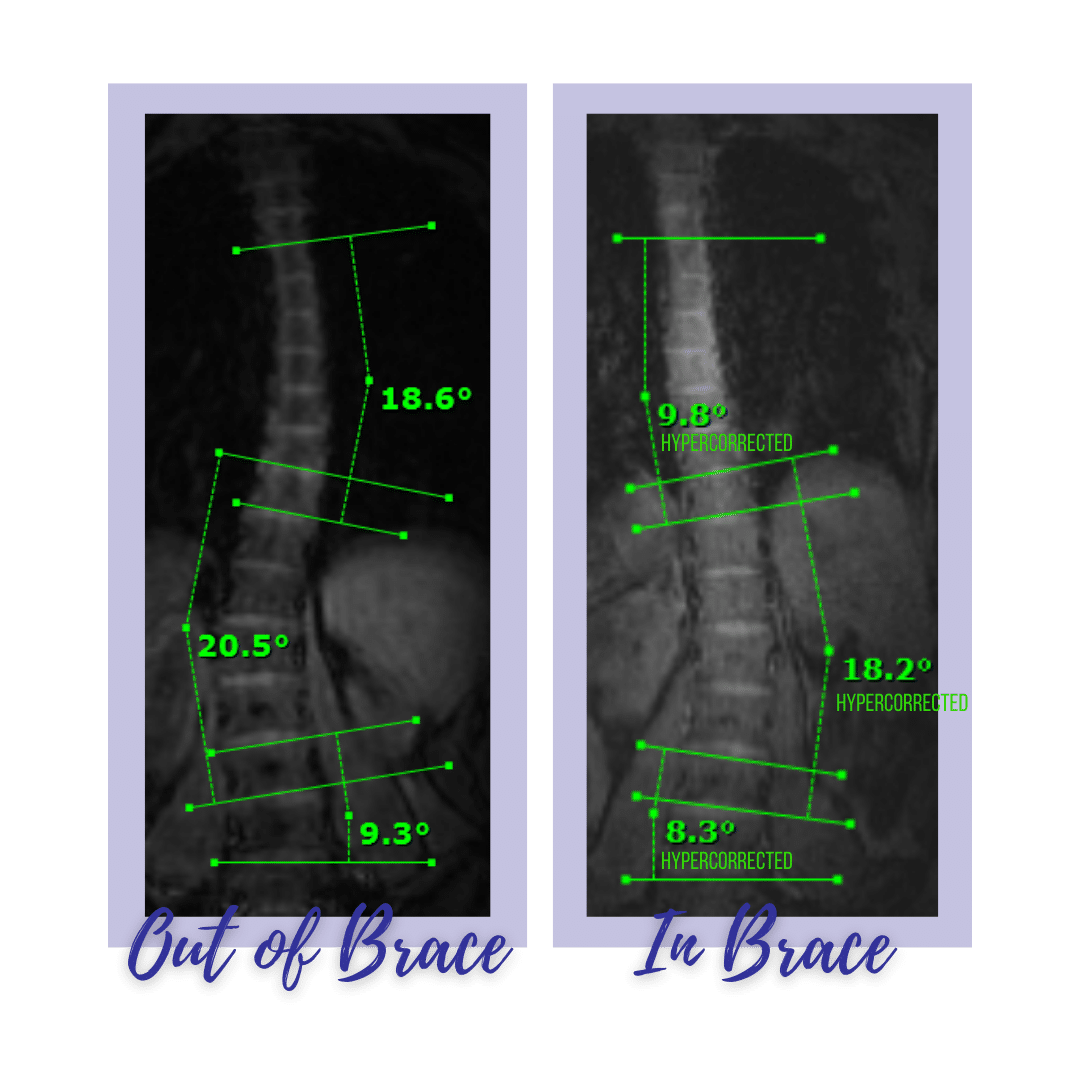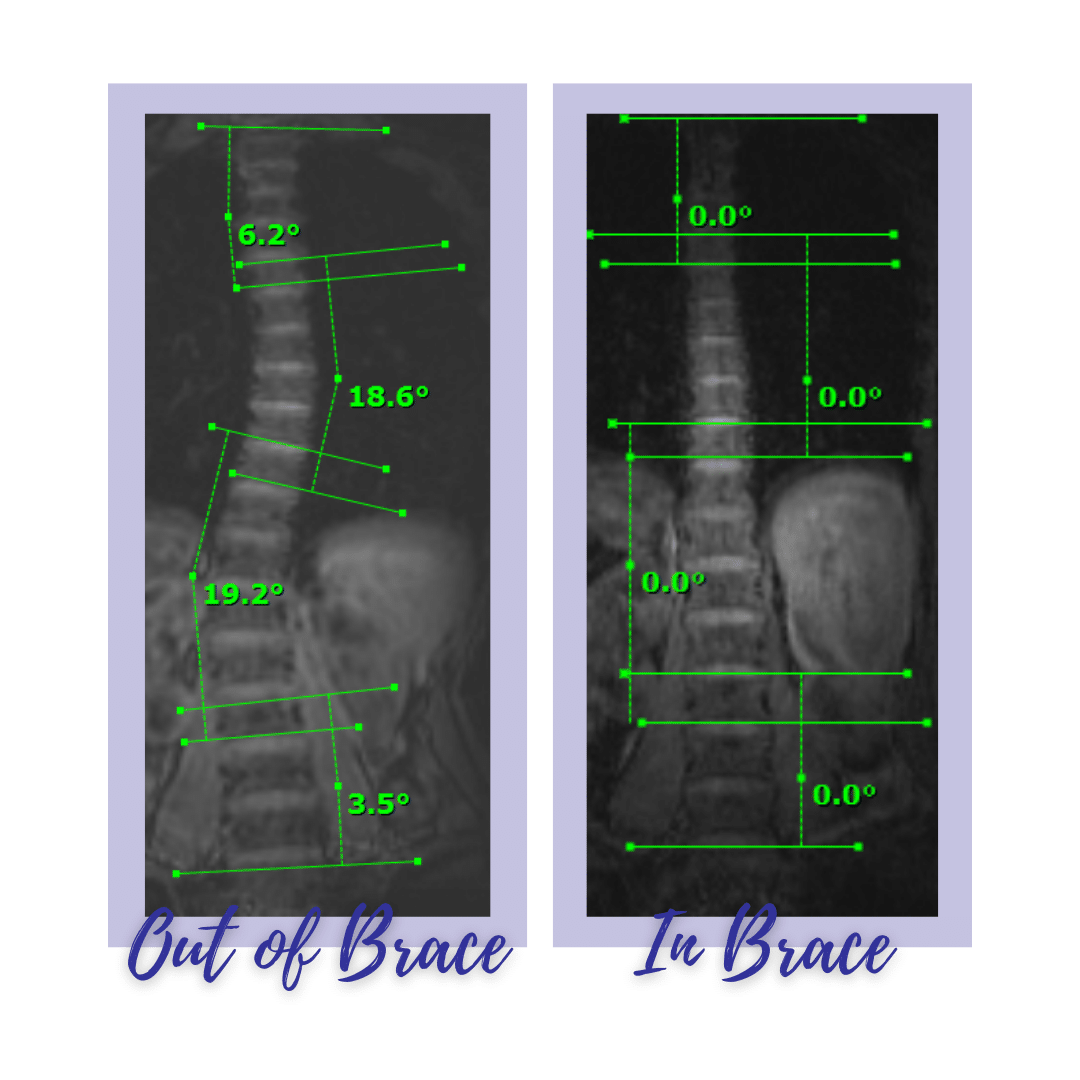
Breaking the Cycle: Why Most Brace Treatments Fail and How to Fix It
Published on 03-31-2025 | By Scoliosis Care Centers
Have you ever wondered why some braces seem to work wonders while others fall short? Understanding the reasons behind brace treatment failures is essential for improving its effectiveness.
Many parents are left frustrated and anxious when they discover that their child’s brace isn’t improving their spinal curves. Brace treatments often fail for two key reasons:
Two Battlefronts for Brace Success or Failure
In-Brace Correction: The brace must significantly straighten the spine while being worn.
Out-of-Brace Correction: Long-term correction that persists even after discontinuing brace treatment. The ultimate goal is for the patients spine to grow permanently straighter.
Out-of-Brace success is possible only with proper in-brace corrective treatment. A spine can only grow as straight as the brace makes it. Meaning, designing a highly corrective brace is essential to achieving excellent in-brace correction.
Setting Goals for In-Brace Correction
Did you know that setting low expectations can hinder your child’s brace treatment success? To achieve great in-brace correction, we must start with aggressive but realistic objectives.
A major problem in brace treatment is setting low expectations and conservative goals. Many parents may feel discouraged when they hear that braces only slow the progression of scoliosis rather than correcting it. This mindset can limit the potential for real improvement.
Aiming High for Lasting Improvement
To maximize the chances of achieving lasting improvement, we must aim high. The goal should be to make the child’s spine as straight as possible. By setting aggressive yet realistic objectives, parents can foster a more positive outlook on their child’s treatment.
Assessing the Effectiveness of a Brace
Once a brace has been fitted, how do we know if it’s working? The effectiveness of a brace must be carefully analyzed. Scoliosis typically involves at least three curves (sometimes more), so it’s crucial that the brace designer and fitter ensure all curves improve. No single curve should worsen due to the brace.
Key Metrics for Evaluating Brace Effectiveness:
Cobb Angle Reduction: For curves under 40 degrees, an in-brace improvement of at least 50% should be the goal. In many cases, we aim for 75-100% in-brace correction, and sometimes even hypercorrection(>100%). Settling for only 25-50% correction often leads to failure.
Vertebral Rotation: Significant improvement in vertebral rotation, observable on a 2D X-ray, is crucial. This correlates with the overall chances of cobb angle reduction. A 3D standing MRI provides an even clearer view of vertebral rotation. It is very important that rotation is improving in all 3 or 4 of the curve regions, and not just in the primary (largest) curve.
Rib Hump Reduction: While harder to assess in-brace, rib hump size should show noticeable improvement within 3-6 months of bracing. The decreased vertebral rotation seen in a MRI will usually correlate to rib hump reduction while in brace.
Postural Symmetry: The brace should visibly reverse the abnormal posture associated with scoliosis.
Three Possible Outcomes When Assessing a Brace
When it comes to assessing the effectiveness of a brace, there are three possible outcomes. Understanding these outcomes can help parents advocate for their child’s treatment.
Excellent or Complete Correction:
- Outcome: All regions of the spine show significant improvement.
- Reality: While this outcome is ideal, it is rare for most braces, but should be the expected outcome for all braces.
Partial Correction, but Not Enough: The most common scenario, especially with widely used braces like the Boston brace.
Common Failures Include:
- The main curve is only slightly corrected.
- Secondary curves remain unchanged or worsen.
- The brace design fails to address key issues like postural imbalance, vertebral rotation, or rib deformity.
In our experience, it is very common for a child wearing a typical Western-medicine brace to see their rib deformity worsen. This often has to do with the brace being too flimsy to avoid collapsing onto the concave side of the ribs, and as well with the brace being too short to reach above the apex of most thoracic curves. Sadly, children will wear braces that worsen parts of their curve for years before anyone notices the problem.
The Brace Makes the Curve Worse: This is the worst-case scenario, where the brace actually exacerbates the scoliosis.
The Importance of Follow-Up Assessments
Unfortunately, many braces are fitted without immediate follow-up to check their effectiveness. It is common for months to pass before an X-ray is taken to assess the brace’s impact, by which time, the patient may have been wearing an ineffective or even harmful brace.
Why Do Doctors Wait So Long to Measure Brace Effectiveness?
Factors Contributing to Delays:
Low Expectations: Many doctors do not believe bracing can significantly straighten the spine. If they expect only to slow worsening rather than achieve correction, they may not feel urgency in checking results.
“Too Stiff to Change” Mindset: Some providers believe the spine is too rigid (due to muscle contractures or skeletal maturity) to respond immediately. This leads to delays of 1–3 months before checking results—valuable time that could be used to improve fit and function.
Systemic Issues in Brace Prescription and Delivery: Many braces are prescribed, designed, and fitted without real accountability or iteration to improve outcomes.
The Magic Brace Myth
Is there a single brace that guarantees success? No.
Many braces claim to be “3D,” “the most advanced,” or “the most prescribed,” but no brace alone can guarantee correction. What matters is the expertise in brace design, fitting, and monitoring to ensure a successful outcome.
Bracing for Failure: How the System Falls Short
Did you know that the typical brace prescription and fitting process involves at least three different people? This fragmented approach can lead to significant failures in brace effectiveness.
The Referring Doctor (Orthopedic Surgeon): Most orthopedic surgeons have low expectations for brace effectiveness. They often define ‘success’ as merely preventing the curve from exceeding 50 degrees, rather than actively improving the condition. This conservative mindset can limit the potential for real improvement in a child’s spine.
The Orthotist (Brace Fitter): The orthotist plays a crucial role in the process. They measure the patient, order a brace, and fit it to the patient. However, due to insurance constraints, many orthotists are incentivized to work quickly rather than strive for optimal correction. This can result in subpar fittings that do not adequately address the child’s specific needs.
The Brace Designer: In many cases, the person designing the brace never sees the patient. Some designs are entirely automated, following templates instead of truly customizing the brace to the patient’s needs. This lack of personalization can lead to ineffective treatments that fail to address the unique challenges of each child.

The “Hand-Off of Low Expectations” Problem
Each party in the process assumes the other is responsible for brace effectiveness. The orthopedic surgeon prescribes a brace with low expectations, the orthotist fulfills the prescription quickly to minimize costs, and the brace designer follows standardized designs rather than customizing for each patient. This fragmented process makes it nearly impossible to improve outcomes.
A New Approach is Needed
The current brace prescription and fitting system is fundamentally flawed. A new approach must be implemented to improve treatment outcomes: This is why we developed the Silicon Valley Bracing Method.
Key Elements of the Silicon Valley Bracing Method:
- Set high expectations for in-brace correction: We must aim for significant improvement in spinal curvature, not just stabilization.
- Ensure immediate assessment of brace effectiveness: Rather than waiting months for follow-up assessments, we need to evaluate the brace’s impact immediately to make necessary adjustments.
- Use 3D MRI Imaging to optimize brace design and correction: Advanced imaging technology allows for precise customization of braces tailored to each child’s unique spinal curve.
By shifting our mindset and approach, we can drastically improve the success rate of scoliosis bracing and help more children grow straighter, healthier spines.
Take Action for Your Child’s Spinal Health
As we’ve explored, the current brace prescription and fitting system is flawed, leading to low expectations and poor outcomes for many children with scoliosis. However, by understanding the systemic issues and advocating for a new approach, parents can significantly improve their child’s treatment experience.
If you’re concerned about your child’s brace effectiveness, schedule a consultation with us today. Our team of experts is dedicated to providing personalized care and innovative solutions to help your child grow a straighter, healthier spine.
Your child deserves the best possible care, and we are here to help. By taking proactive steps and seeking the right support, you can make a significant difference in your child’s health and well-being. We look forward to working with you!



